site search
online catalog
PAINTED KNAPSACK OF L. M. LORENTZ, 1st MARYLAND, POTOMAC HOME BRIGADE, WOUNDED IN ACTION ON CULP’S HILL AT GETTYSBURG JULY 3, 1863
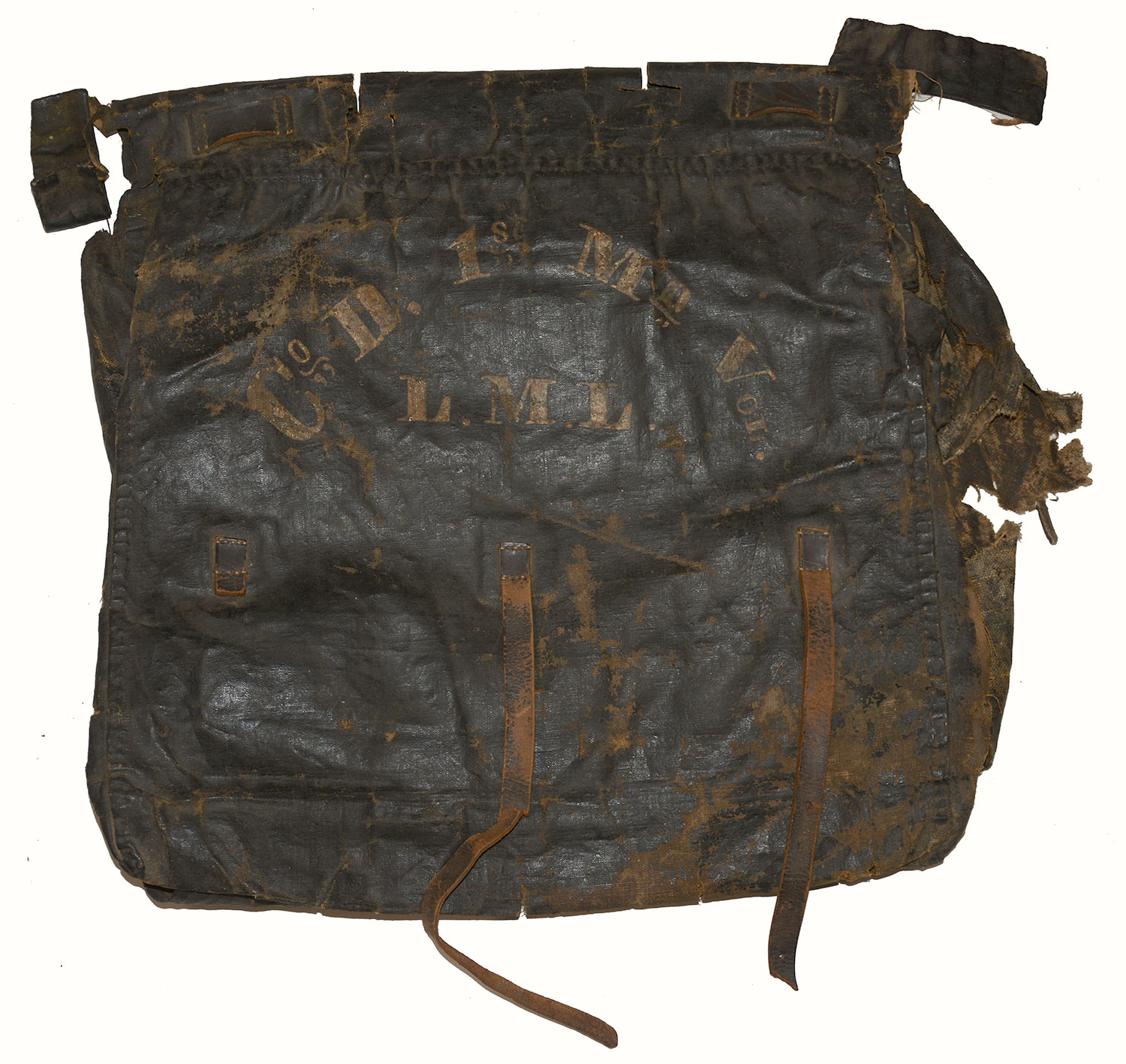
Hover to zoom

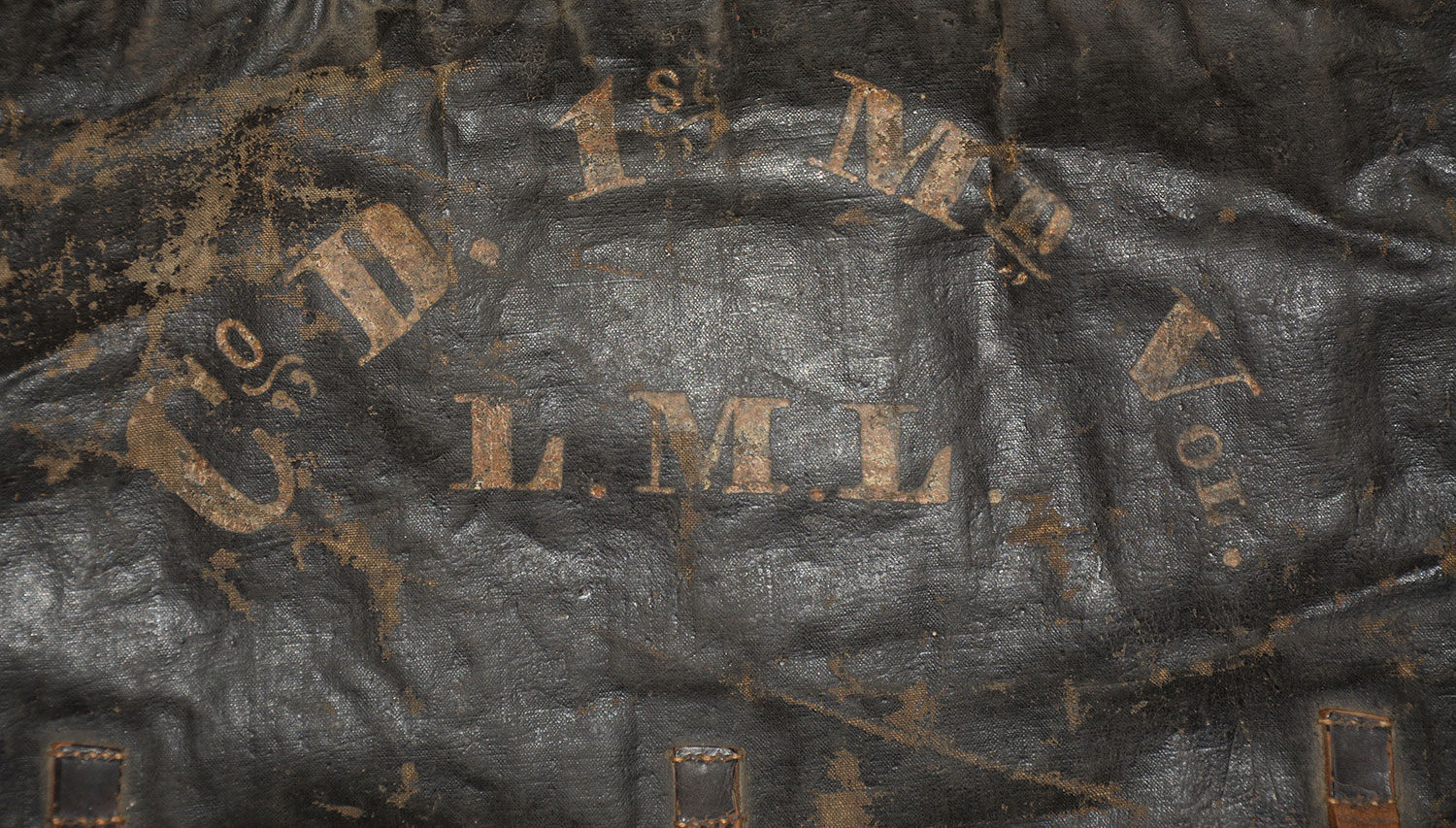
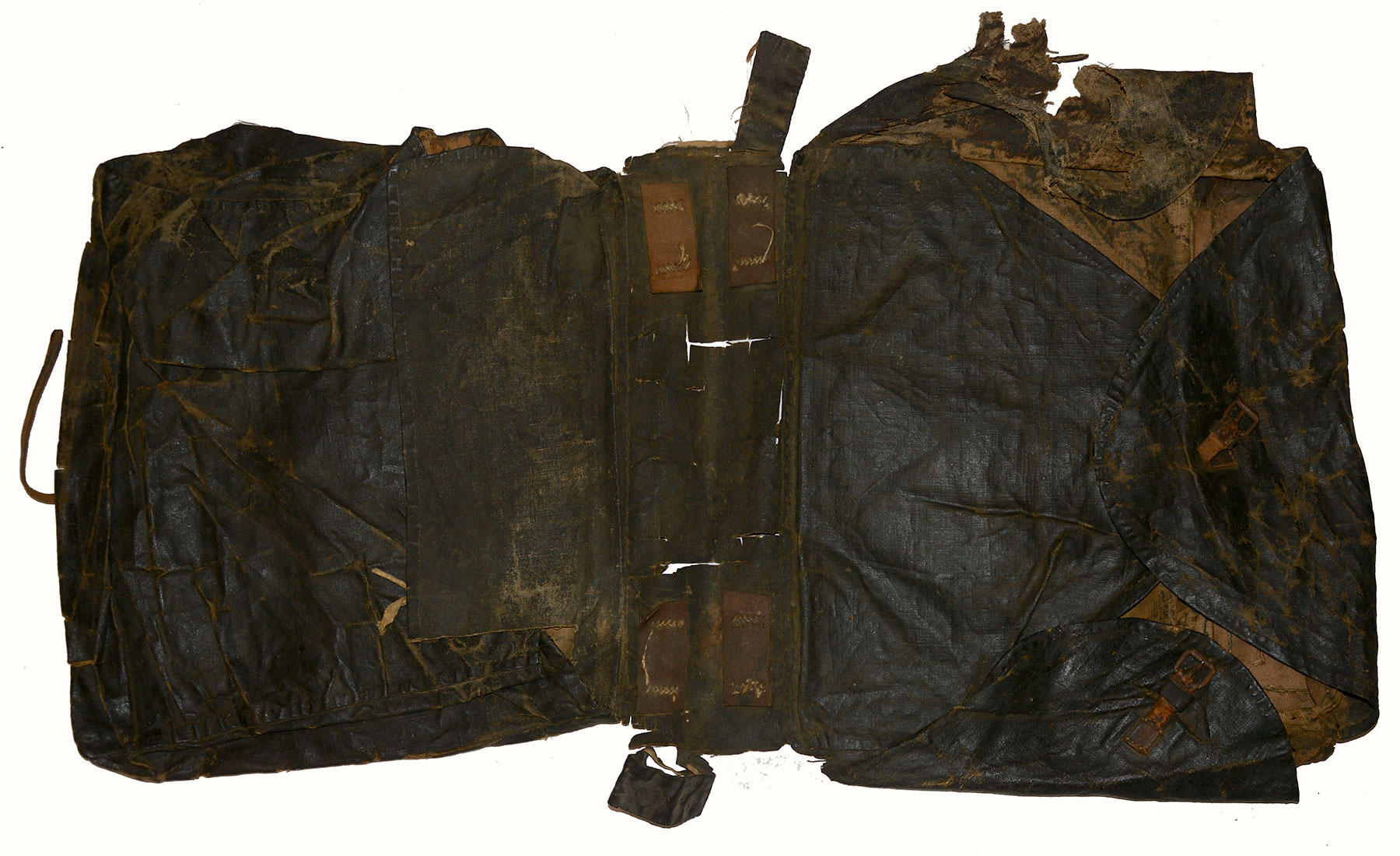
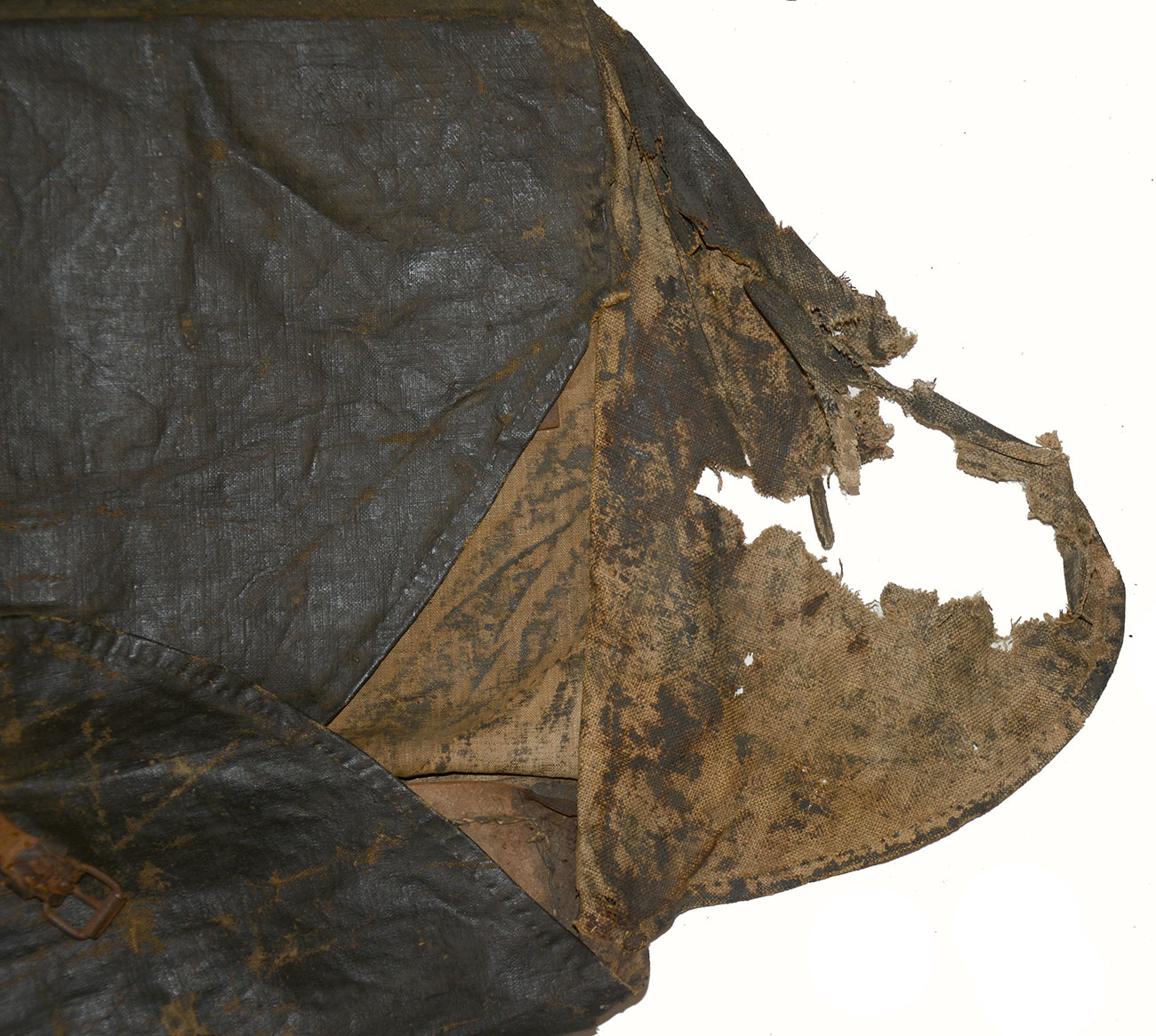
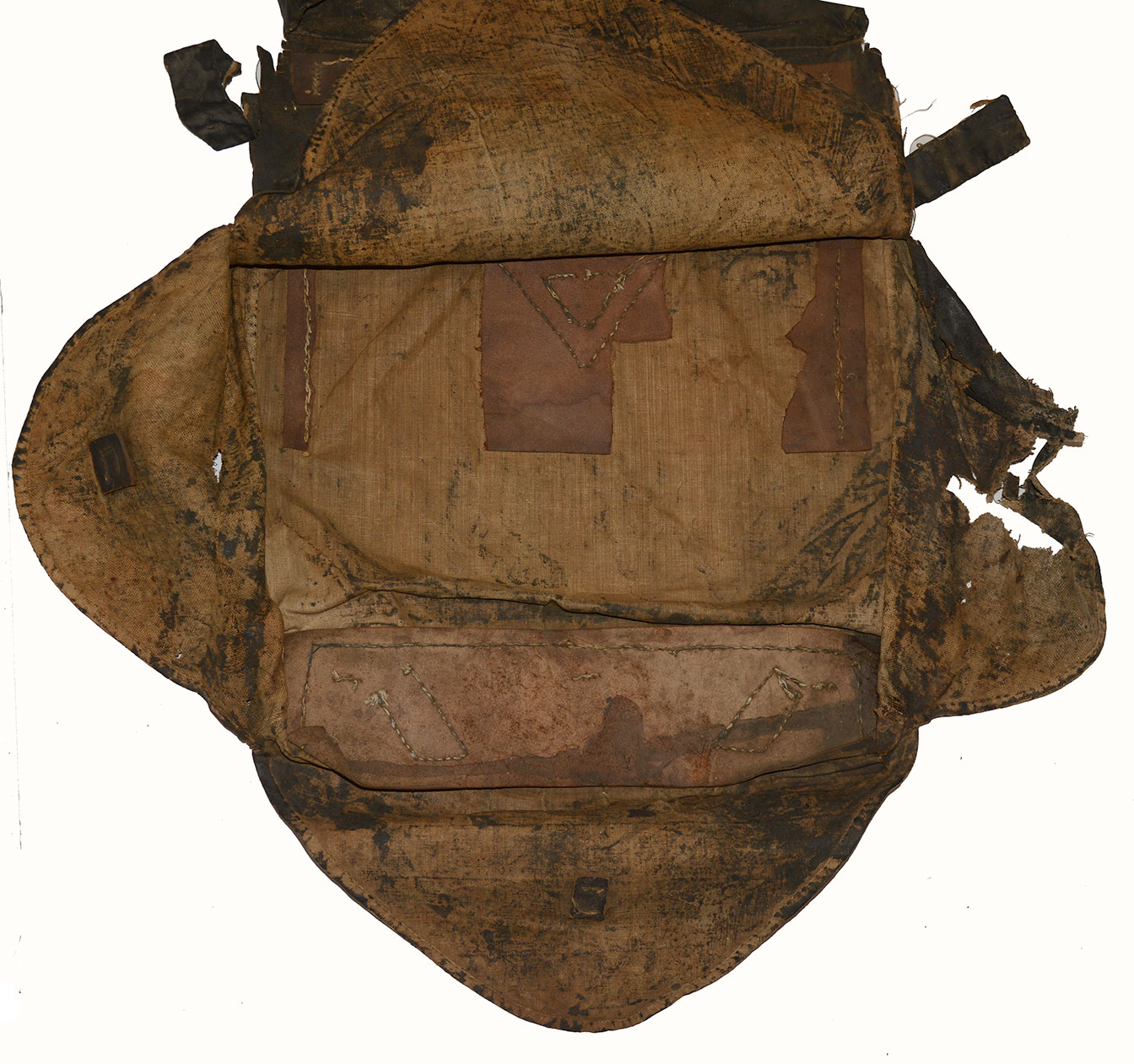
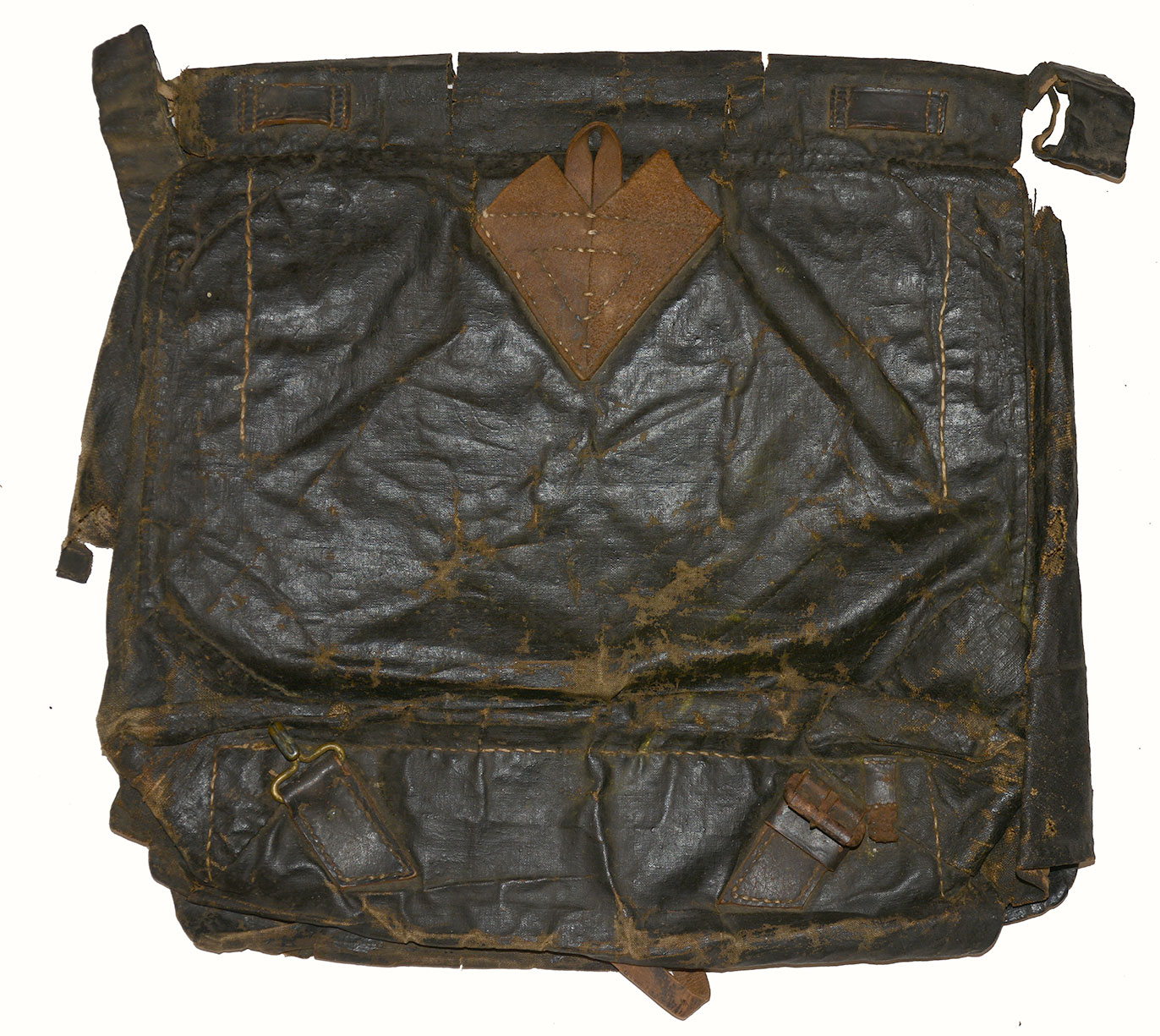
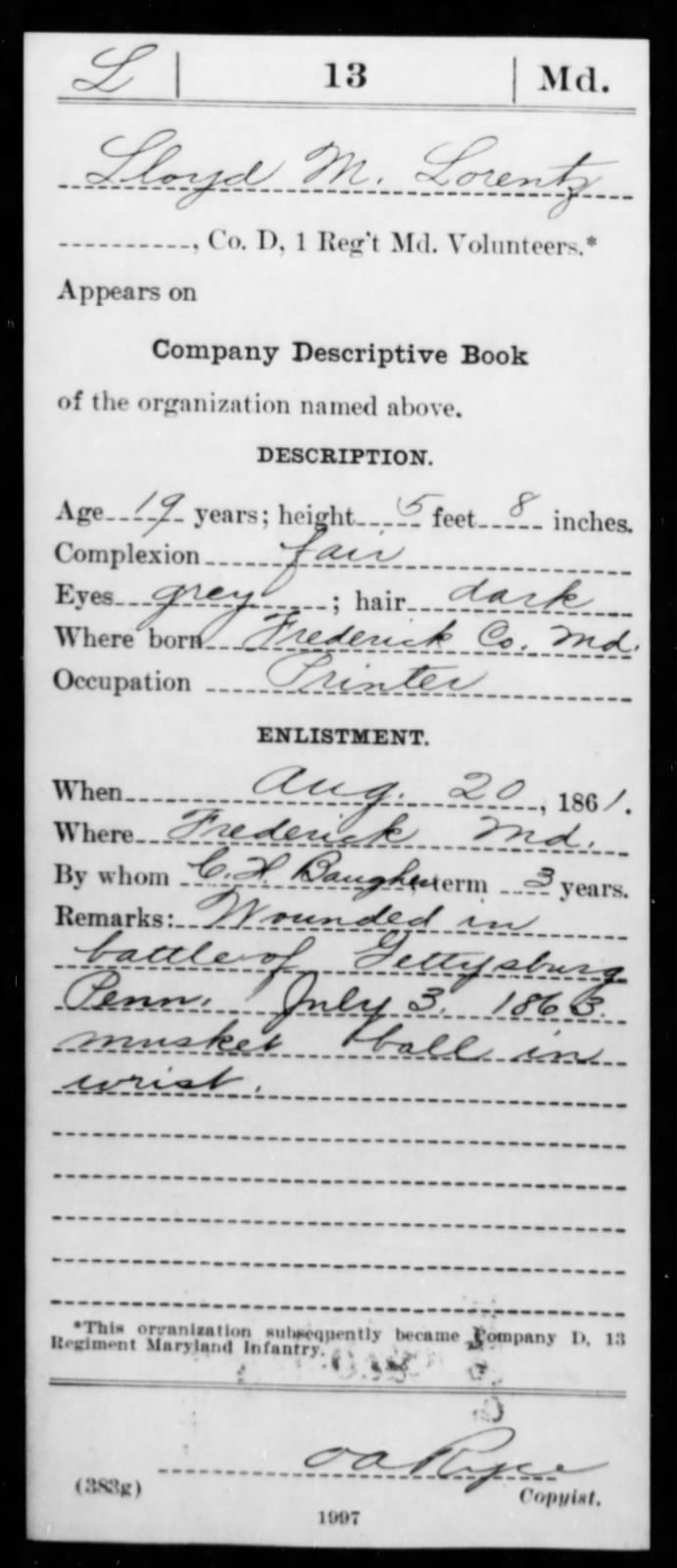
$4,500.00 ON HOLD
Quantity Available: 1
Item Code: 846-589
This knapsack is clearly identified in old, original, dead-real white paint on the upper back of the outer flap with “L.M.L.” in block letters, the soldier’s initials, and his unit in an arc overhead: “Co. D. 1st MD Vol.” The soldier is Lloyd M. Lorentz of Company D, 1st Maryland Volunteers, also known popularly and in official records as the 1st Regiment Potomac Home Brigade Maryland Volunteers, 1st Regiment Maryland Potomac Home Brigade, 1st Regiment Potomac Home Brigade Infantry, along with a few other permutations and even by its later designation as the 13th Maryland. The confusion is increased when we add into the mix two other US Maryland units: the 1st Maryland Eastern Shore Vols and another simple “1st Maryland Vols.” All were in effect volunteers, but rival claims to priority for designation as the “First” extended even to making the CS 1st Maryland Battalion use their later designation as the 2nd Maryland Battalion on their Gettysburg monument. In this case, not only does the card file for Lorentz include the designation of his regiment as the “1st Regt. Md. Volunteers,” we made it a point to check the other two Union Maryland regiments claiming that number and found no other candidate not ruled out by a different expressed middle initial, his company assignment, or both.
Records show that Lorentz was with the regiment in the Maryland Campaign of 1862 where they were among the troops captured at Harpers Ferry and was present at Gettysburg, where the regiment saw action on July 2 in plugging the gap in the Union center before returning to their first posting near Culp’s Hill where they were involved in the early morning fighting of July 3, which put the regiment in action close to the Confederate 1st Maryland Battalion and during which Lorentz suffered a musket ball wound to the wrist. He is also listed as present on the July-August 1864 company rolls, when the regiment saw action at Monocacy, MD, on July 9, the last of the three “principal engagements” listed on their Gettysburg monument, along with eight skirmishes.
Lorentz was born about 1842, with the family showing up in Frederick County, MD, in the 1850 census and his father listed as a shoemaker. By 1860 he seems to have been on his own, still in Frederick County, but living in the household of a printer, and listed as printer himself, apparently learning the trade. He enlisted Aug. 20, 1861, and mustered as private into Co. D of the 1st Maryland Potomac Home Brigade Infantry, sometimes called the 1st Maryland Volunteers, on September 14. The company muster rolls are not very good until Sept-Oct 1863, stating neither that he was present or absent, only noting a hospital stay for sickness on the Nov-Dec 1861 roll and for his Gettysburg wound on the July-Aug roll. Thereafter they become better and note him as present, but it seems clear earlier records were simply omissions. His parole after capture of the regiment at Harpers Ferry in September 1862 is there, as well as a note that he was AWOL for a time in November and sick in quarters in February, both before the regiment was exchanged and returned to active duty in March 1863.
Early in the war the regiment served with Banks in the Shenandoah, taking part in the advance on Winchester and was then assigned to guarding railroad lines before returning to Harpers Ferry where they were credited with action at Loudon Heights on May 27, 1862. They then spent more time as railroad guards before going to Annapolis, being assigned to the 8th Corps and seeing action at Monocacy Aqueduct on Sept. 4 and little more than a week later were involved in the fighting at Maryland Heights at Harpers Ferry on Sept. 13, covering the withdrawal of Union troops from that critical position, and then being surrendered on Sept. 15.
After being exchanged in March 1863, the regiment was assigned to Lockwood’s brigade, which was dispatched in late June to join the 12th Corps, reaching Gettysburg on July 2, with two of its regiments, the 1st PHB and 150th NY. (The 1st Maryland Eastern Shore, also in the brigade, arrived in time to take part in the fighting on July 3.) On arrival, Lockwood’s troops were made an independent command within the corps to avoid any awkwardness since he out ranked Gen. Thomas Ruger who had been given division command, but was at least a known quantity.
On July 2 Lockwood, with his two regiments then on the field, was called into action to help plug the hole in the Union center, and Lorentz’s regiment took part in retrieving several captured cannon of Bigelow’s battery at the Trostle Farm and engaging some of the 21st Mississippi of Barksdale’s brigade, falling back toward the Emmitsburg Road from the highpoint of their charge. They were then called back to Culps Hill where they took part in the early morning fighting of July 3 in the effort to dislodge Confederate troops. Under its commander Col. William Maulsby, Lorentz’s regiment charged from a position along the Baltimore Pike into woods bordering the Pardee Field, with the left wing of the regiment halting there to engage Confederate skirmishers behind a stonewall across the field to their left and the right wing pushing on past Spangler’s Spring to face Confederates there, with some secondary sources speculating they tangled in some degree with elements of the Confederate 1st Maryland Battalion in the fighting. At some point in that fighting, Lorentz was shot in the wrist, medical records listing it as a wound from “musket ball.” The July-August company muster roll indicates he was hospitalized for the wound, but it does not seem to have been serious: the September-October roll lists him as present. His conduct on the whole must have been good. He was promoted to corporal on December 4, and continues to be listed on the rolls as present until mustering out September 9, 1864, at Harpers Ferry.
Lorentz continued to work as printer after the war, moving to Memphis, Tennessee, by 1867 and apparently working for a newspaper. He married in March1868, but the union was less than happy, ending in divorce by 1870, when the census lists him on his own, with his wife accusing him of “habitual drunkenness, personal abuse, calling her bad names, etc.” The Shepardstown (MD) Register of September 114, 1878, reported his death in Memphis about a week before from Yellow Fever.
Lorentz’s knapsack is the regulation tarred canvas double-bag knapsack adopted in the US Army about 1853 that has a single large pocket in the outer lap, opening at the top and tied closed with two rawhide thongs attached to a short closing flap that would tie to two more attached to the bag. A flat top piece, fitted with flat leather loops for blanket roll straps, joins this to another bag forming the side against the soldier’s back, shaped like a square compartment opening on its face with four triangular flaps secured by short straps and buckles and deep enough against the soldier’s back to fit a wood frame occasionally issued, but more often omitted or used for kindling. Three small buckles on the bottom fasten the two bags together using long straps attached to the outer flap. A set of leather shoulder straps was sewn to the upper back and secured to the underside of the pack by a buckle on one side and hook and triangular loop on the other to make it easier to unsling the pack. A secondary set of straps would split off from these halfway down the soldier’s chest, fitted with brass hooks to help support the waist belt and balance the load.
The knapsack displays very well, with outer flap showing some abrasions, one missing and one torn fastening strap, but the paint showing just appropriate age, completely legible and attractively done. The interior shows wrinkling and creases to the bag portion, with loss of some of the ties, as well as some dirt, wear and holes to the square compartment and its flaps, though with two of the small fastening buckles in place. This could be easily padded out and stabilized. The hook and buckle are in place on the underside of the pack, but the shoulder straps were removed at the top rear. None of this shows, however, when the pack is displayed to show the painted identification, and the top portion bearing the flat loops for the blanket roll straps has some tears, but is substantially intact and shows well.
This is a great painted knapsack belonging to soldier wounded in the most famous battle of the war in a critical part of the fighting, and from a state that exemplifies the Civil War in supplyin thousands of its residents to both sides. [sr] [ph:L]
~~~~~~~~~~~~~~~~~~~~~~~~~~~~~~~~~~~
THIS ITEM, AS WITH ALL OTHER ITEMS AVAILABLE ON OUR WEB SITE,
MAY BE PURCHASED THROUGH OUR LAYAWAY PROGRAM.
CLICK HERE FOR OUR POLICIES AND TERMS.
THANK YOU!
Inquire About PAINTED KNAPSACK OF L. M. LORENTZ, 1st MARYLAND, POTOMAC HOME BRIGADE, WOUNDED IN ACTION ON CULP’S HILL AT GETTYSBURG JULY 3, 1863
Most Popular
Historical Firearms Stolen From The National Civil War Museum In Harrisburg, Pa »
Theft From Gravesite Of Gen. John Reynolds »
Selection Of Unframed Prints By Don Troiani »
Fine Condition Brass Infantry Bugle Insignia »
Large English Bowie Knife With Sheath 1870’S – 1880’S »
Imported (Clauberg) Us Model 1860 Light Cavalry Officer's Saber »
featured item
RARE EBERLE 1796 CONTRACT MARKED BAYONET
This rare bayonet is marked by the maker in a sunken cartouche with raised letters on the base of the blade reading “Eberle.” Charles Louis Eberle emigrated to the U.S. from Germany with brothers George A. and Henry J. in 1794, arriving in… (1052-86). Learn More »


